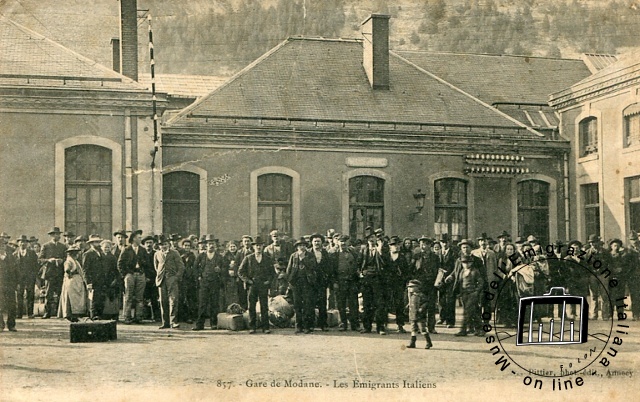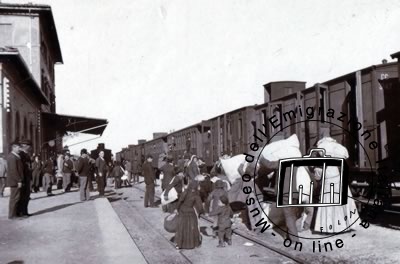The journey - that is, the time it takes to reach the country of destination - is the symbolic element of the whole migration process, of the detachment from a "before" - known and loved, though unsatisfactory - to reach an "after" - certainly attractive but almost entirely unknown. It is a time as difficult to experience as the turning points that matter in everyone's life.
For many Italian emigrants, the train is the main means of reaching the major national and European ports of emigration: Genoa, Naples, Palermo, Le Havre... Like ships, trains and railway stations, from the mid-nineteenth century onward, become the symbol of the detachment suffered by families, who bid farewell by accompanying their loved ones to the railway station as they departed for the ports of embarkation. Writes emigrant Pascal D'Angelo: "I heard the roar of the train - neither mules nor horses to drag it - then the grip of my father urging me to get into the carriage."
As a result of immigrant entry restriction policies implemented by overseas countries, new destinations were added to Italian migratory flows after World War II, now directed toward central and northern European countries. Thus trains loaded with migrants began to cross Europe, taking millions of Italians to Paris, Brussels, Stuttgart, Zurich...
Starting in the 1970s, trains also became the symbol of internal emigration, from the south to industrialized northern Italy, where the main destinations became those of the industrial triangle Genoa-Milan-Turin.



